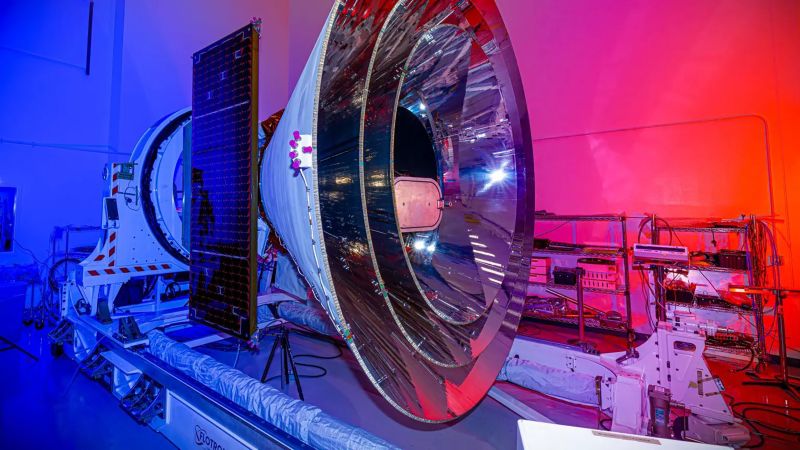NASA has once again made strides in space exploration with the successful launch of its latest space missions, which include the SPHEREx (Spectro-Photometer for the History of the Universe, Epoch of Reionization and Ices Explorer) and PUNCH (Polarimeter to Unify the Corona and Heliosphere). This two-for-one cosmic deal aims to expand our understanding of the universe and the sun, respectively. The missions were launched aboard a SpaceX Falcon 9 rocket from Vandenberg Space Force Base in California, marking an essential moment in the chronology of astrophysical research.
The launch took place at 11:10 p.m. ET on a Tuesday, following numerous delays since the original window of opportunity opened on February 28. Weather conditions and integration issues delayed the launch as engineers worked meticulously to prepare both missions for space. Julianna Scheiman, who oversees NASA’s Science Missions at SpaceX, highlighted the challenges faced in the encapsulation process of the missions within the rocket’s protective faring. However, despite these setbacks, the joint launch of SPHEREx and PUNCH ultimately enhances scientific efficiency by maximizing the scientific return from a single launch.
While these two missions have distinct objectives, the collaboration exemplifies NASA’s dedication to advancing space science. According to Dr. Nicky Fox, the associate administrator of NASA’s Science Mission Directorate, launching PUNCH alongside SPHEREx allows for more cost-effective science operations. Both missions aim for sun-synchronous orbits, meaning that each spacecraft will maintain a consistent orientation relative to the sun throughout the year, ensuring optimal observational conditions.
SPHEREx is designed to investigate the potential origins of life across the cosmos. It will study how the universe has evolved, concentrating on the identification of fundamental life ingredients in various cosmic environments. SPHEREx is slated to spend over two years orbiting Earth at approximately 404 miles (650 kilometers) above the surface, and it is expected to collect data on more than 450 million galaxies and over 100 million stars within our galaxy.
One of SPHEREx’s key scientific goals is to analyze the cosmic phenomenon known as inflation, which explains how the universe rapidly expanded in size after the Big Bang. To achieve this, the observatory will map the sky in 102 colors of infrared light, allowing researchers to better understand the chemical compositions of celestial objects, including evidence for water, carbon dioxide, and other vital compounds. The mission will focus particularly on molecular clouds, where new stars—and potentially formed planets—are born, perhaps containing water essential to life as we know it.
PUNCH, on the other hand, is a constellation of four small spacecraft that will delve into solar phenomena. Together, they will explore how the sun affects the solar system, focusing on solar wind and the sun’s outer atmosphere, known as the corona. This mission aims to provide global, three-dimensional observations of where the corona transitions into solar wind and how this interaction influences the entire solar system.
Both missions will undoubtedly contribute to our understanding of the universe, but their collaborative synergy enriches NASA’s overall scientific output. Dr. Mark Clampin, acting deputy associate administrator for NASA’s Science Mission Directorate, emphasizes the importance of distinct observational strategies: while PUNCH focuses on detailed studies of solar dynamics, SPHEREx conducts extensive surveys, creating an integrative approach to astronomical research.
As the missions progress, a complementary relationship will emerge between SPHEREx and the James Webb Space Telescope. While SPHEREx captures broad views of the cosmic landscape, Webb will focus on detailed observations when SPHEREx identifies areas of interest.
In summary, the launch of SPHEREx and PUNCH represents a significant advancement in NASA’s efforts to explore both the universe at large and the immediate environment of our sun. The collaborative nature of these two missions not only exemplifies efficient resource utilization but also paves the way for groundbreaking discoveries about life’s origins and the solar environment in which we exist. The insights gained from these missions could revolutionize our understanding of both astronomical entities beyond our atmosphere and intimate solar phenomena influencing life on Earth.












